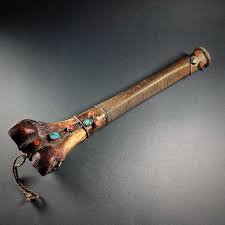Share this Article
The Danphe, also known as the Himalayan Monal (Lophophorus impejanus), is Nepal’s national bird, celebrated for its vibrant plumage and cultural significance.The Lophophorus genus, encompassing the Himalayan Monal and Impeyan Pheasant, is a fascinating group of birds within the pheasant family, Phasianidae. These striking pheasants are known for their vibrant plumage, especially the male, and are found in the high-altitude regions of the Himalayas. The Himalayan Monal (Lophophorus impejanus) is particularly notable as the national bird of Nepal.
Physical description
Male (Adult)
- Size: Approximately 70 cm (28 inches) in length, including the tail. Males typically weigh between 1.9 to 2.3 kg.
- Plumage: Multicolored feathers with metallic green, coppery, and purplish hues. The back and neck are adorned with reddish copper feathers. A prominent white rump patch is visible during flight. The tail feathers are uniformly rufous, darkening towards the tips.
- Crest: A long, metallic green crest on the head.
- Facial Features: Bright turquoise-blue skin around the eyes.
Female (Adult)
- Size: Slightly smaller than the male. Females weigh between 1.8 to 2.15 kg.
- Plumage: Duller tones compared to the male, with brown and buff coloration. The upper parts are covered in dark brownish-black feathers. A prominent white patch on the throat and a white strip on the tail.
- Crest: Shorter and brown, lacking the metallic sheen of the male.
Juveniles
- Appearance: Resemble females but are generally less distinctly marked.
Notable Features
- Sexual Dimorphism: Males are more colorful and larger than females, a characteristic typical in many bird species.
- Habitat Adaptation: The Himalayan Monal is adapted to high-altitude environments, with its plumage providing camouflage among the colorful alpine meadows and forests.
Habitat and Distribution
The Himalayan Monal is native to the high-altitude regions of the Himalayas, including Nepal, India, Bhutan, China, and Myanmar. In Nepal, it is commonly found in alpine and sub-alpine areas, particularly in steep grassy and open rocky slopes. During summer, it inhabits elevations ranging from 3,300 to 4,750 meters, descending to lower altitudes in rhododendron forests during winter, especially in times of heavy snowfall .
Diet and Foraging Behavior
The Danphe is omnivorous, feeding on a variety of plant materials and small animals. Its diet includes:
- Nuts
- Tender leaves
- Insects
- Roots
- Shoots
- Small invertebrates
The bird uses its strong beak and claws to dig for food items such as roots, insects, and seeds, making a distinct pattern in the soil where it has been foraging .
Reproduction and Life Cycle
- Nesting: Females dig a shallow nest in the ground, often under boulders or in sheltered spots.
- Eggs: The female lays 3 to 5 eggs, which are incubated for about 27 days.
- Chick Development: The male remains close by to protect the nest and assist in raising the chicks, which become self-sufficient after approximately six months .
Cultural and Religious Significance
Nepal’s national bird and holds significant cultural and religious importance. Its vibrant plumage, especially the metallic greens, blues, and reds of the males, makes it a striking symbol. In Hindu tradition, Lord Krishna is depicted with Danphe feathers, and children often use them during Krishna Ashtami celebrations. The feathers themselves are considered symbolic of peace and are used for various purposes, including writing instruments and decorations.
How to conserve Danphe in Nepal?
1. Protecting and Improving Habitat:
- Protected Areas:
Strengthen the existing network of protected areas, including national parks, conservation areas, and buffer zones, to safeguard Danphe habitats. - Habitat Restoration:
Implement habitat restoration projects to improve the quality and quantity of suitable habitats for Danphe, including areas with suitable vegetation and food sources.
Sustainable Land Use:
Encourage sustainable land use practices in and around Danphe habitats, such as responsible forestry and agriculture, to minimize habitat degradation.
Raising Public Awareness:
- Education Campaigns:
Launch national awareness campaigns using various media, such as radio, TV, newspapers, and social media, to educate the public about the importance of Danphe conservation. - Community-Based Education:
Develop and implement educational programs for local communities to raise awareness about Danphe conservation and the importance of protected areas.
Involve Stakeholders:
Engage government agencies, conservation organizations, and local communities in conservation efforts to ensure a collaborative approach.
Research and Monitoring:
- Population Monitoring:
Establish a national population monitoring program to track Danphe populations and assess the effectiveness of conservation efforts. - Ecological Studies:
Conduct extensive research to understand Danphe ecology, habitat dynamics, and threats to inform conservation strategies. - Scientific Tools:
Utilize rigorous scientific tools and techniques to gather data on Danphe populations and their habitat.
Conclusion
The Himalayan Monal, or Danphe, is a remarkable bird that embodies the natural beauty and cultural richness of Nepal. Its vibrant plumage, unique behaviors, and symbolic significance make it a cherished emblem of the country's wildlife heritage. Continued conservation efforts are essential to ensure that future generations can continue to admire and protect this majestic species .
Categories:
Nature & Wildlife
Tags:
NepalNationalBird







